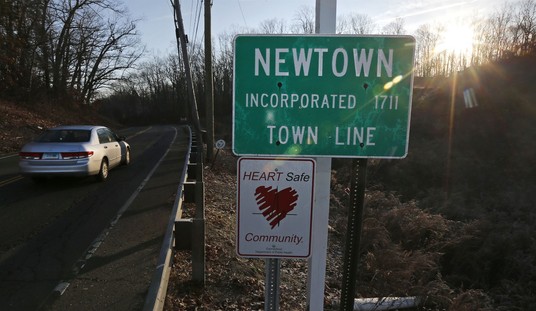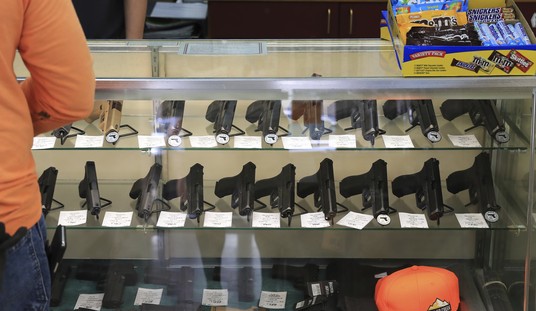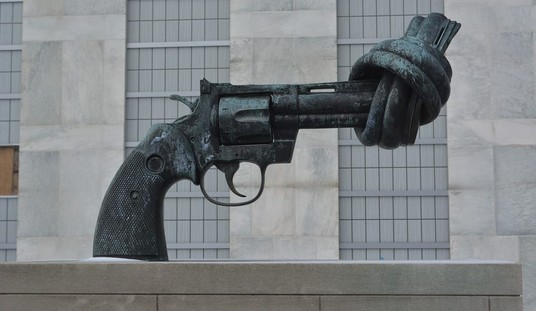We climbed up into the new 400-horsepower Porsche Cayenne S, ready to embark on a mad road trip that would take us deep into the heart of Kentucky bourbon country. The itinerary was ambitious by any measure – eight days, seven posh sporting clays venues, 13 flats of shells, six bourbon distilleries and a fresh box of Gurkha Evil cigars. Our departure date was September 11th.
Maybe it was pure coincidence that the 2011 Cayenne S loaned to us by Porsche was painted Meteor Grey Metallic, since we mapped a southbound blaze on freeways and back roads to celebrate the defining American spirit – Kentucky bourbon.
In addition to Porsche, Connecticut Shotgun Manufacturing Co. supported our road trip by supplying an A-10 American sidelock over/under. This 12-gauge, full-sideplated beauty quickly made itself at home among the most luxurious sporting-clays and hunting destinations in America: Nemacolin, Elk Creek, Rock Castle, The Inn at Blackberry Farm, The Biltmore, Primland and Keswick Hall.
Receiving the opportunity to spend ample quality time with the A-10 American turned the page on my association with the shotgun. Only months prior I shook down a prototype of the A-10 American through 100 rounds of sporting clays at the 8th Annual American Side by Side Classic (you can read the story here). Even as a test mule, the A-10 American offered a strong showing – raising the question as to whether or not a production model would surpass initial expectations.
Upon opening the hard case of the A-10 American, pulling away the wrapping revealed a case-color-hardened receiver adorned with a full rose and scroll motif. A 3X wood upgrade and 32-inch barrels created an elegant demeanor, and when I assembled the shotgun it shouldered quite comfortably. I slid the A-10 American into a fleece-lined slip, ready to pack it into the Porsche Cayenne S.
There is always a defining moment when preparing a sweeping road trip. For us, that moment crystallized when the Porsche Cayenne S arrived in the driveway. It carried the stature of Odd Job, the henchman in the James Bond movie, Goldfinger. The muscle implied by the 20-inch Spyder wheels and slab-sided outer surface seemed impossibly compressed into the compact body. The Cayenne S skin appeared ready to burst from a sheer abundance of kinetic energy.
The 400-horsepower, 4.8-liter V8 with four overhead cams generated 369 pound/feet of torque that fed an all-wheel drive system through an eight-speed Tiptronic transmission you could manually shift via stainless-steel paddles. Showing 656 miles on the odometer, our Porsche Cayenne S arrived optioned to the hilt: 14-way black leather seats with premium interior appointments, electric moon roof, satellite radio, BOSE Surround Sound, Bluetooth, ski bag – bearing a big enchilada price of $92,935.
With the rear seats folded, the Porsche Cayenne S turned into a space-age pack mule. All our shooting gear, plus appropriate dinner wear, stuffed the approximate 63 cubic feet of storage area.
 |
| The five-stand pavilion at the Nemacolin Shooting Academy. Trap machines are arranged in a conventional five-stand layout with a surprise wobble machine that throws targets from below |
Up front, the cockpit envelops you into the sphere of a concept car, which manufacturers display at major shows to foreshadow design trends and consumer interest. The interior was an exercise in contemporary performance – more Lear Jet than land yacht. The wide center console plus an overhead console fashioned an immersive experience into a milieu of buttery leather and stainless-steel accents that whispered “sleek.” A thick, leather steering wheel delegates the Porsche Cayenne S as more of a tag-team partner than transport vehicle ready to stomp a few heads. The aesthetics would surely disappoint the well-to-do who associate automotive luxury with a surfeit of polyurethaned wood.
Insert the fob into the ignition and push the Start button and the Porsche Cayenne S rewards with a rumble that is the four-cam heartbeat of a road maw.
For day one of the trip, we programmed two destinations into the integrated GPS.
Our first stop would honor the fallen American heroes of United Airlines Flight 93, the jetliner hijacked on September 11, 2001 and diverted from San Francisco toward Washington, D.C. – until a posse among the 40 passengers mounted an assault that ended with a fiery collision into a bucolic field near Shanksville, Pennsylvania. First Lady Michelle Obama and her predecessor, Laura Bush, were scheduled to lead a morning memorial at the site now occupied by a temporary display. We opted to skip the First Ladies and instead pay tribute in our own respectful way.
From Shanksville, we would drive south about an hour to Nemacolin – the upscale über-resort in Farmington, Pennsylvania. Nemacolin had recruited a new sporting clays manager, Mike Luongo, and we were eager to learn about the changes under his direction.
Some 10 miles from home we arrived on Interstate 70 west that would rise into the Allegany Mountains. The XM satellite radio provided our entertainment as the Porsche Cayenne S pressed into higher altitudes. The massive tires and all-wheel drive consumed the road with the capacity of sucking up cherry soda through a fat straw.
Interstate 70 west led us to 68 West where the foothills matured into steeper inclines. The highway was wending its way over ridges and blasted out canyons. The air suspension and relentless torque turned the left lane into an aircraft carrier runway where you expect to be consumed by the bliss of a horizonless ride any second as the material world bent under the certain grip of unfolding g-force with Miles Davis as our guardian angel.
You arrive in Shanksville at an elevation of 2,230 feet. The sunny mild weather on September 11, 2010 mirrored the climate on the same day nine years before. Under an autumn sun that ripened the fragrance of mulch and decay from the bosom of the mountains, Shanksville put across the melancholy of an otherwise forgotten town suddenly thrust into the 24-hour news cycle. A country store here and there, old homes with aluminum windows and asphalt shingle siding, the volunteer fire department, adolescent boys with crew cuts bouncing a basketball in a cement front yard, bespoke of a commonplace, hardscrabble life now digitized and deconstructed far beyond repair.
A series of detour signs guide you through Shanksville to the gathering place that is the Flight 93 National Memorial. Meandering through the side streets, you feel this ongoing sense that nearly all 250 citizens of Shanksville have begrudgingly become players in a theater of sorrow.
We arrived hours after the First Ladies, and so traffic was light. But approaching the fenced-in field designated as a parking area, a massive assembly of bikers started in right behind of us. They were American Legion riders in a group portrait of Wall Street outcasts. Bandanas, leather chaps, mustachioed and bearded, their colors were festooned with bald eagles, American flags and MIA patches. Crossing the field, we fell in behind them – men who embodied the epoch of stevedores and steel workers – together gravitating toward the Memorial.
The temporary memorial, a Quonset hut crammed with photos and narratives, draws you into the gut-wrenching saga that transfixes solemn visitors.
The Stonycreek Township field, though, is a massive construction site cordoned off by a chain-link fence serving as an ad hoc monument for the small American flags, and assorted ribbons, flowers and wreaths. Children grasp the wires of the diamond weave, gazing at the field.
Looking out, what hit me hardest was overhearing someone explain how the jet inverted right before crashing. The certain doom of an upside down landing fills your head with their screams.
But those screams will be transformed into an everlasting remembrance when the Flight 93 Memorial reaches completion in 2014. The “Tower of Voices,” a 93-foot structure supporting 40 wind chimes, will resonate the voices of the passengers and crew as a perpetual echo – not only of their anguish and courage, but of the inexorable fight to defend our right to bear arms.
Even after you return to the car and drive away, the affront to our country and loss of innocent Americans fortifies your resolve to carry on. It manifests, if you will, in a real transition where you pass through a covered bridge only a couple of miles away – from the darkness into the light again.
The Nemacolin Field Club is about four miles from the main resort. We stopped there before checking into the hotel, since it was on the way. The clays shooting facility is a 140-acre complex replete with 35 sporting clay stations spread across three courses, FITASC and a five-stand pavilion with a wobble trap.
Clays shooting is part of a complete activity bill of fare that also includes golf, tennis, fly fishing, air rifles, spas, shopping, archery, indoor wall climbing, hiking, swimming, skiing, off-roading, bowling – all of it organized throughout the wooded 2,000 acres. Given all the calories you could burn, Nemacolin provides sustenance with restaurants that run the gamut from the Forbes Five Star and AAA Five-Diamond, fine dining experience, Lautrec to the English Pub-like Tavern, to pizza and burgers in The Wild Side.
Some people describe sporting clays as golf with a shotgun, and at Nemacolin that similarity becomes immediately apparent by the groomed landscaping and pervasive quality of everything you see. Inside the contemporary, rustic club house, we caught up with Mike Luongo, the sporting clays manager.
Mike is an affable guy, NSCA instructor and master-class shooter. Along with one of his instructors named James, we hopped into a cart. The wooded setting of the sporting clays course reflects the history of Nemacolin.
The original 400-acre parcel served as a private game reserve for industrialist Willard Rockwell, founder of Rockwell International after he purchased it in 1968. He built a lodge, golf course and airstrip.
A few years after the property was sold in 1979, it reverted back to the Rockwell family. But in 1987, Joseph A. Hardy, III, founder of the 84 Lumber Company, purchased a large portion of the woodlands at auction. Hardy and his daughter, Maggie, began transforming their property into Nemacolin. The push to build a world class resort assumed a furious pace, with the Field Club making its debut in 1999.
The original woodlands character remains very much alive on the sporting clays course, but it now has a new manager in Mike who joined in March 2010 from Pintail Point, in Maryland.
Most of the people who shoot the course are Nemacolin guests and so it’s the job of all the NSCA-certified instructors to ensure that even sporting-clays virgins get the chance to break a few targets. This demands a combination of patience, professionalism and targets amenable to guests curious about the sport.
As Mike explained: “We want to them to start off with good habits and break some targets.”
Nemacolin instructors run through a check list with each new shooter that covers safety, gun fit, eye dominance, target focus and other fundamentals essential to successful sporting clays. They don’t impose any particular system either. The Nemacolin instructors are fluent in swing-through, sustained lead, pre-mount, low-gun…identifying the best approach for a shooter’s innate abilities.
If there is a prevailing philosophy at the Nemacolin Field Club it’s “economy of move,” Mike explained. “The less you have to swing the gun, the less room for error.”
Although experienced shooters may find many of the targets too easy, Mike and his crew do a great job of trying to satisfy all level of sporting clays enthusiasts. But from our perspective Nemacolin provides a venue to “get healthy” in terms of returning to your basic skills.
There’s nothing like a few slow incomers in order to focus on your mount – where you have plenty of time to dissect your technique. Am I mounting the gun properly? How is my timing? Do you I pull the trigger when the stock touches my face? Are my feet in the right position?
For us, Nemacolin gave us the luxury to slow down the pace for some meaningful analysis. Better yet, the NSCA instructors are eyeballing your performance, always at the ready with advice.
Personally, after shooting some extremely difficult courses, Nemacolin presented the occasion to slow down and practice our mount, swing, target focus and foot position. Developed any bad habits lately? You’ll be surprised at quickly they can be identified at Nemacolin, giving you the opportunity to engage the help of your instructor.
That said, if you really want to push the envelope the FITSC and five-stand pavilion with wobble trap that are adjacent to the lodge would stress-test the progress you made on the sporting clays course.
Nemacolin’s five-stand pavilion encourages all-weather shooting. You climb the stairs of the redwood structure – your perspective about 20 feet above the ground. The wobble trap throws birds from under you, while the other traps are arranged in a more conventional five-stand layout. From a master control panel, Mike threw a range of combinations that could encompass any level of difficulty.
Mike’s leadership at the Nemacolin Field Club is definitely bringing some positive changes. A master target setter, Mike plies his skill more frequently these days as the targets are now changed out every two weeks.
This year marked the first upland shooting at Nemacolin.
The full and half-day guided hunts take place at a 290-acre farm about four miles from the Field Club. Guides, dogs and bird cleaning are available in pursuit of pheasants, chukars and quail.
Mike introduced “Member Madness” on Mondays. Field Club members are entitled to shooting 100 rounds at a bargain $25, including a cart. Memberships are surprisingly inexpensive. The annual dues of $100 gets you 100 rounds plus a cart for $40 ($77 for non-members). If the Field Club staff deems you a safe shooter, a squad can go out without a trapper. Prices for lessons are cut from $140 to $80. Members are also entitled to a 15% discount in the pro shop.
The Field Club introduced a Mid-week Special. You’ll need at least four hunters, but for $135 per person you’ll enjoy 20 live birds in a walk-up shoot (including guide and dog), 50 sporting clays targets and lunch at the resident Orville’s Pub.
After our afternoon at the Field Club, we were ready for dinner. At the Nemacolin Woodlands Resort, the first building you see is the Chateau Lafayette – a 124-room homage to the celebrated Ritz Paris in France. Take any of the corridors off the grand reception lobby and you’ll experience the impressive $45 million dollar Hardy Family Art Collection.
As the valet unloads your vehicle, don’t be surprised when they send your shotguns to the Field Club instead of your room. Off-site, your firearms are stored in the gun safe, and in actuality, it’s probably the safest place for them.
You can’t escape the feeling that the Chateau is more luxury liner than edifice. There’s a pervasive sense of wonder about the volume of the place as captured in the marble, brass and glass. It’s immense yet intimate because the world-at-large remains far away.
Our spacious room contributed to that cruise-ship outlook as the high Palladian windows showed an abundance of sky. A chandelier in the tray ceiling and the huge bed acknowledged the architect’s inspiration of the Ritz Paris. The large bathroom contained a Jacuzzi tub ensconced in an abundance of marble.
Dinner reservations were booked at Aqueous. If you’re a fan of Frank Lloyd Wright, cocktails and meals are a must at Aqueous, which resides in the luxurious 42-room Falling Rocks Hotel – a shuttle bus ride from the Chateau.
The hotel’s name pays homage to Wright’s classic Fallingwater home in nearby Mill Run, Pennsylvania. Aqueous is ultra-modern tempered with an interior of organic materials and shades and period jazz for an ambient cool. But it also has real chops for foodies: it’s a AAA Four-Diamond restaurant.
Our table faced the Mystic Rock Golf Course as sundown infused the sky with pastels. Aqueous is known for the house dry-aged steaks. We started with half-dozen cold-water oysters and roasted corn and white onion chowder. For the entrees, we moved on to the 10-ounce strip steak with shoe-string potatoes and a small filet accompanied by a salt baked potato. We opted for a bottle of 2001 Estate Cabernet Sauvignon from the Napa Palmaz Vineyards. Get this wine if you ever visit Aqueous.
The chef started us with a delicious amuse-bouche of sweet corn muffin and rosemary-garlic butter. The oysters arrived with both cocktail sauce and a spectacular wine sauce, which was the best oyster accompaniment we ever tasted.
Aqueous offers different sauces with the steaks. I ordered the Brandy Peppercorn, a far better selection than the house steak sauce. Our steaks arrived the perfect temperature. For dessert, the most irresistible choice came down to a decadent banana cream pie.
The service at Aqueous was prompt, courteous and consistent, and overall the place provided a fabulous dining experience.
Back at the Chateau, we stopped in the Cigar Bar, steps away from the main lobby. The full bar gives way to a classic men’s club of yore as captured in leather, mahogany, bound books and low lighting. A large fireplace mantle bears a lion’s head, and the crystal ash trays were over-size.
With a 10-year-old Lagavulin and Montecristo Platinum from the cigar case, I simply wanted to relax, but couldn’t. The Meteor Grey Porsche Cayenne S was out there, under the crescent moon, waiting to rumble.








Join the conversation as a VIP Member